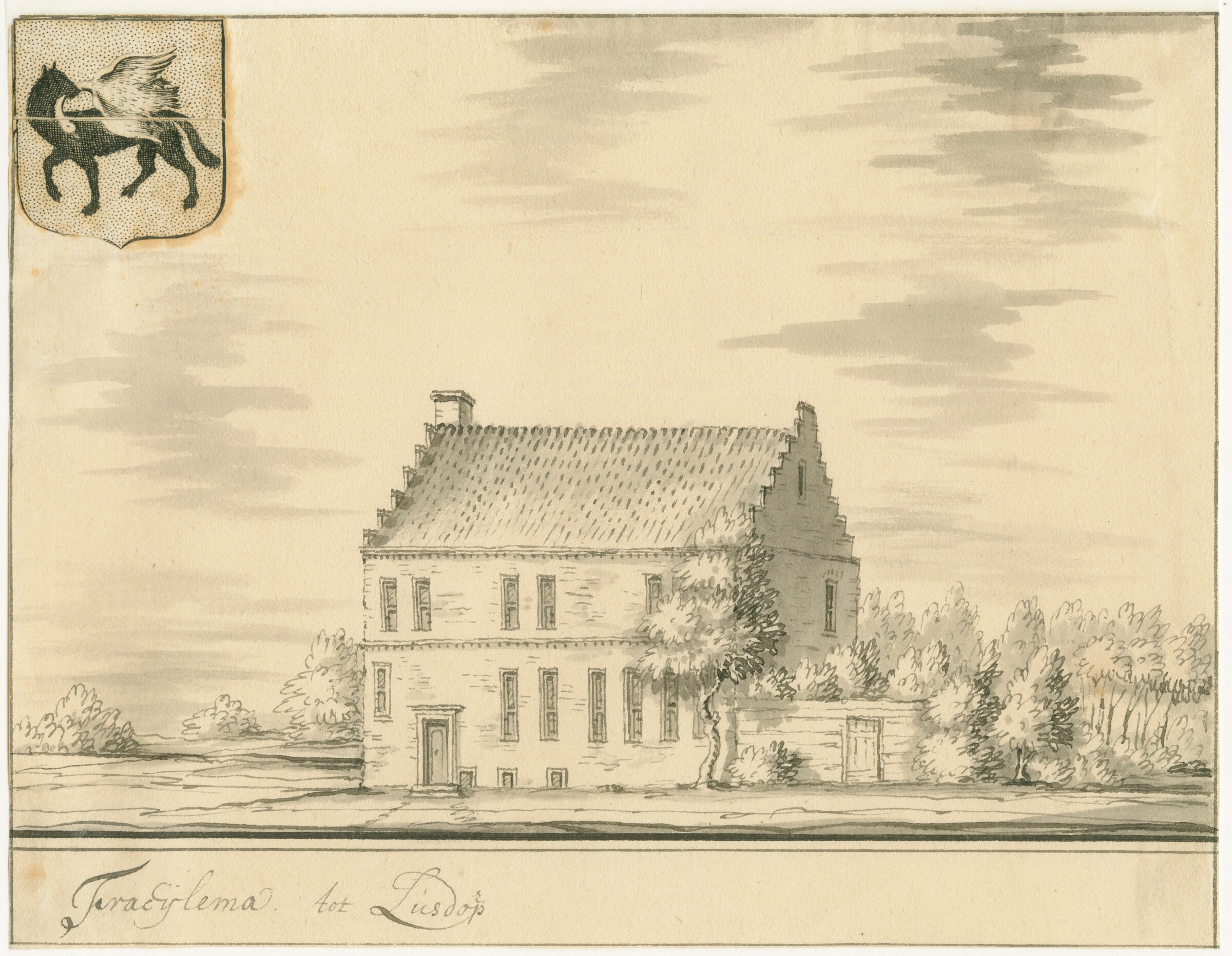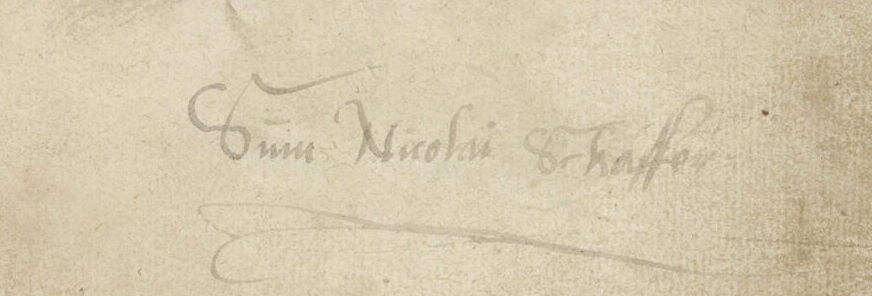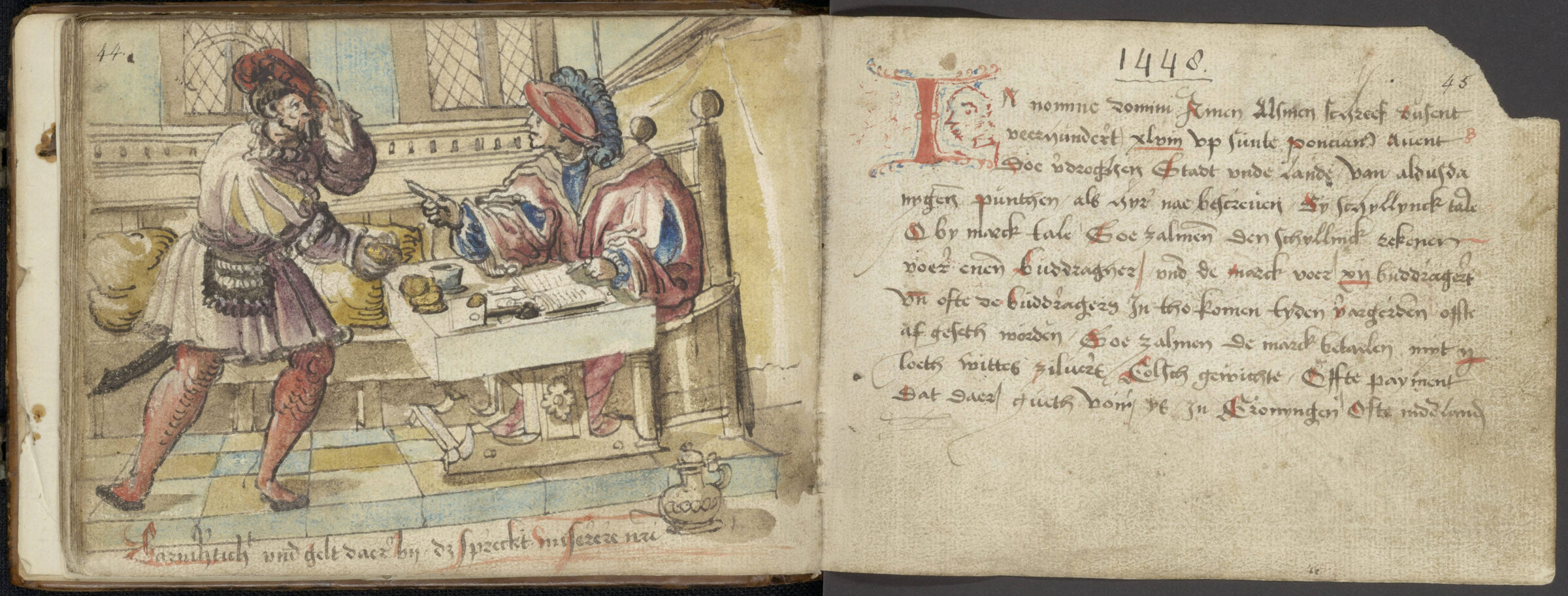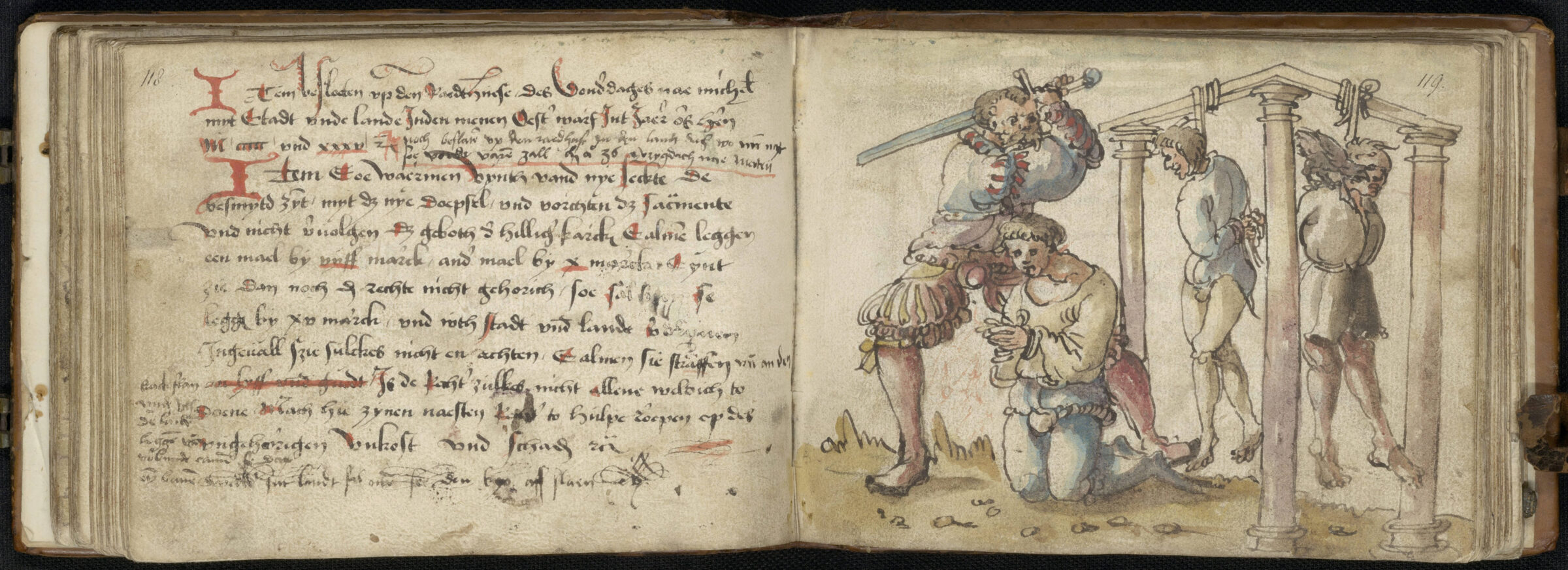Here, in the little village of Losdorp, you can now find the Fraeylemaheerd. For centuries, there was a borg – an estate house – which burned down in 1890. An 18th-century drawing of the building shows a decent-sized house with three floors and a gable roof with roof tiles. One of the oldest known residents of that borg was Nicolaas Schaffer. He lived here in the sixteenth century as the squire of Losdorp.

Nicolaas Schaffer left us this book. It is a manuscript with the land rights of Fivelgo, Hunsingo, and Groningen in a remarkable format: horizontally oblong. Besides the various legal texts, it contains an almanac, a calendar of saints, and the zodiac signs. Based on the almanac, this book can be dated back to 1535. The various handwritings in the book suggest that Schaffer did not write the book himself in that year. He did add notes and additions at a later date. The six expertly crafted illustrations highlight that Schaffer (or a previous owner) had the manuscript made by professional scribes and illustrators.

The illustrations provide a special window into the history of this area. In Schaffer’s time, the city of Groningen and its surrounding areas, known as the Ommelanden, waged battle constantly. Groningen was also known as “the tail of Drenthe” among the people of the Ommelanden. They viewed the Groningen administrators as strangers who had no business in their area. Even so, the influence of Groningen in the Ommelanden grew with time. At the start of the sixteenth century, Groningen became involved in the Guelders Wars and the battle against Emperor Charles V. Because of this, it lost its hold on the Ommelanden, which evolved into a sanctuary for religious refugees who tried to evade the Catholic Inquisition. A large number of Anabaptists and other Christian minorities travelled north, because, initially, local authorities did very little to keep them away. Under the banner of Frisian Freedom, religious minorities were able to live more or less freely in this area.

This tolerance, or indifference, ended in 1536 when Groningen allied with the catholic Emperor Charles V and subsequently attempted to end the riots and uprisings caused by the religious minorities. The first blows were dealt in the city of Appingedam, the central stronghold of the Anabaptists at the time. This worked out well for the Groningen administrators, because the presence of the Anabaptists in Appingedam gave Groningen the opportunity to significantly weaken the power of its biggest opponent, which was the only city in the Ommelanden.
The Anabaptists were chased out of Appingedam with the support of Charles V and the fortifications of the city were destroyed. As a result, large groups of Anabaptists spread out across the Ommelanden. Militant Anabaptist groups such as the Batenburgers plundered and pillaged villages, borgs, and farms. In response, the chiefs of Groningen worked together with judges from the Ommelanden to re-establish law and order through clear agreements between the two parties.

We can read about these agreements in Nicolaas Schaffer’s book. For example, a collective penance was put in place for Anabaptists and other ‘new sects’. Those who did not adhere to the commandments of the Catholic Church were fined five marks. If the offender still refused to be obedient, they were fined ten or fifteen marks. As a last resort, the squire was allowed to use corporal punishment. The drawing next to this clause shows how brutal law enforcement could be.
In this book, Nicolaas Schaffer read how he as the squire could take action against heretics in his area. The book shows that the administrators of Groningen and the Ommelanden took extreme measures to reduce the following of religious minorities.
Author: Rens Huisman







